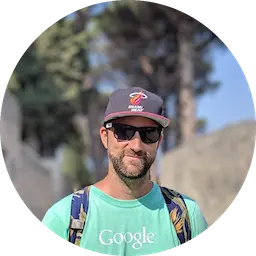Welcome 👋
I am Philippe Miron, an AI Engineer passionate about the ever-evolving world of artificial intelligence and how to automate processes and tackle complex tasks. At Premera Blue Cross since Sep. 2024, our team is responsible for deploying a scalable, agent-based AI framework to support a variety of business needs, most notably a retrieval-augmented generation (RAG) system that helps Customer Service Representatives search thousands of policy documents. Over the next few months, I will be building a suite of interconnected AI agents and tools—using the Agent2Agent Protocol (A2A) and the Model Context Protocol (MCP)—and deploying them efficiently on Kubernetes (AKS).
From Jan. 2023 to Sep. 2024, I worked at DTN—a weather intelligence company. I was part of the Remote Sensing, DevOps and Data Science groups. My main responsibility was to lead the development of a state-of-the-art software as a service (SaaS). This involves processing real-time global remote sensing datasets and ensuring seamless delivery of subhourly updates to our clients. I have gained experience in building efficient containerized applications, optimizing Kubernetes resources and performance, writing infrastructure as code, training and serving Machine Learning models, developing pipelines, building monitoring tools, and documenting the whole process.
I come from an Academic background. During my Ph. D.—in Mechanical Engineering at Polytechnique Montréal—I study vortex dynamics using high speed cameras and large lasers. I learned a lot about hardware and had the opportunity to experiments with microcontrollers. It was an amazing opportunity to design and plan hardware for experiments as well as building the softwares to process large datasets. My interests then transition from fundamental Fluid Dynamics to Physical Oceanography, more precisely on the study nonlinear phenomena in geophysical flows with emphasis in ocean transport and mixing processes.
During this time, I engaged in various projects that allowed me to develop analytical skills and thinking, but more importantly, developing my curiosity to always learn new things, striving for continuous improvements—a philosophy rooted in the Kaizen (改善) mindset—while embracing new challenges.
When not in front of the computer, I can be found enjoying the beach, diving, running, cycling, or exploring new places.
Tech stack 🤖🛠️
Throughout my career, I have gained extensive experience with a diverse set of tools and technologies:
- Languages: Python, C/C++, Julia, Go
- ML & AI Libraries: PyTorch, TensorFlow, Scikit-learn, NeuralForecast, AWS Bedrock, Hugging Face Transformers
- Web & Workflow Frameworks: FastAPI, Flask, Metaflow
- Validation & Serialization: Pydantic
- Data Science Tools: Dask, NumPy, Pandas, SciPy, Matplotlib, Streamlit
- Cloud & DevOps Tools: AWS, Azure, Docker, Kubernetes, Datadog
- Database Systems: PostgreSQL, MySQL, SQLAlchemy
- CI/CD Platforms: GitLab, GitHub, Azure DevOps
- IaC Tools: Terraform, Helm, CloudFormation, Bicep
These tools have empowered me to build scalable AI solutions, optimize cloud resources, and ensure robust data pipelines.
Tech posts 🧑💻️
- Alice RAG [July 2, 2024]: Introduction Read more »
- Hash Table [June 13, 2024]: Ever wonder why searching in a list is O(N) but in a dictionary is O(1)? I implemented a simple python class to reimp… Read more »
- Jellyfin [April 1, 2024]: Alright, now that we have a Kubernetes cluster running (previous post), we have to install some applications 🚀! Read more »
- Setup Kubernetes for my homelab [February 1, 2024]: A few weeks ago, I decided to put my trusty Mac Pro 6,1 (also known as the trash can) to use and create a Kubernetes … Read more »
Academic posts 🧑🔬️
- DARPA Challenge [December 13, 2021]: In December 2021, we finished third place and win $10k, out of 32 teams, in the DARPA Forecasting Floats in Turbulenc… Read more »
- Garbage patches [March 2, 2021]: We used transition path theory (TPT) to infer “reactive” pathways of floating marine debris trajectories. The TPT ana… Read more »
- Brazil oil spill [October 21, 2019]: The oil spill started on August 30, 2019 and has affected over 2000 km of coastline in Northeast Brazil. The incident… Read more »
- MH370 disappearance [April 30, 2019]: Markov-chain models are constructed for the probabilistic description of the drift of marine debris from Malaysian Ai… Read more »
